Belvedere
Bernd TrasbergerA public garden in Mönchen-Gladbach is replanted. A border is filled with different flowers in a pattern of large red ovals against a blue background.
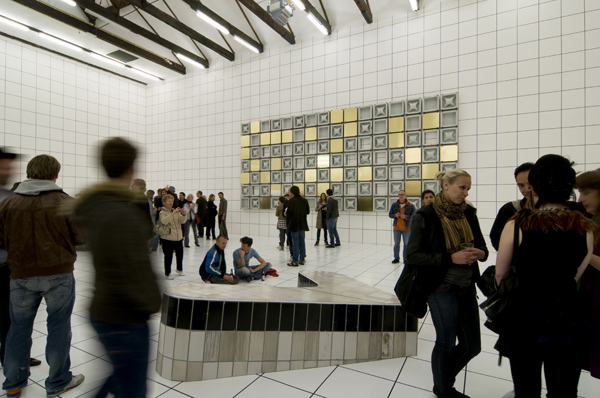
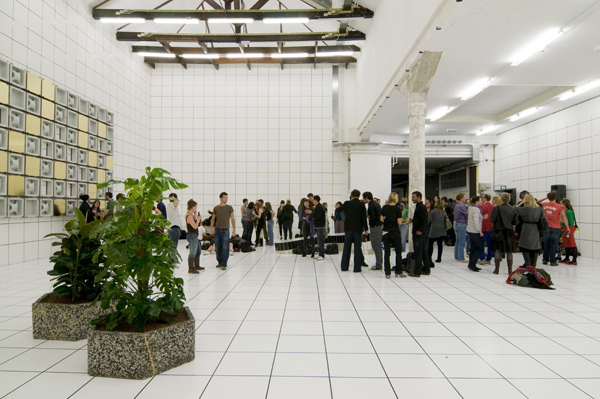
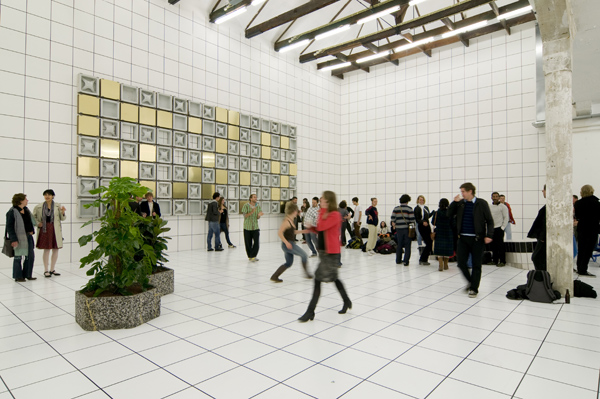




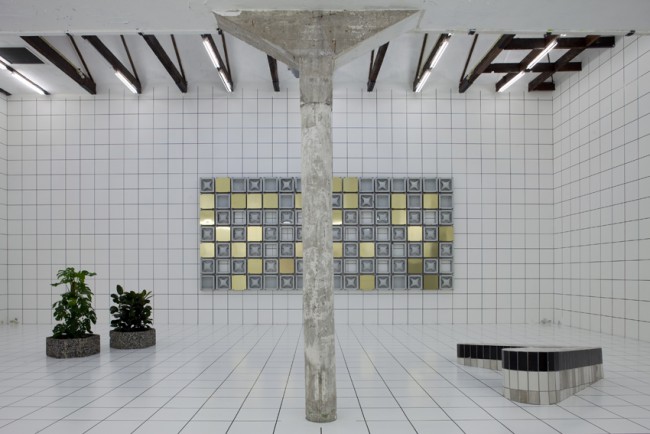
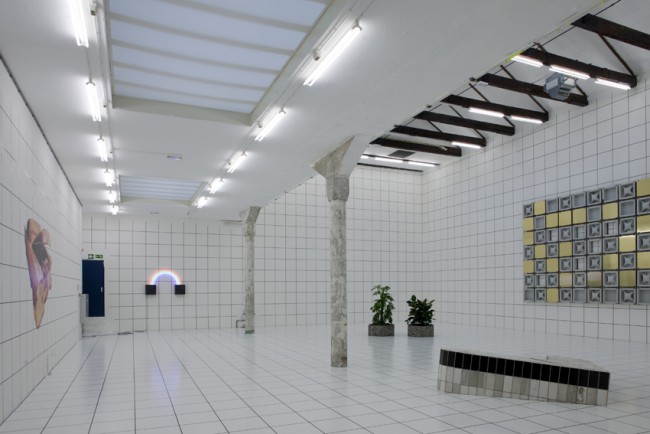




The large flowerbed next to it is striped lengthways in turquoise with narrow white bands. At the head of each strip is a concrete form – a rectangular block on a slightly smaller base. Only the keen-eyed, sensitive observer would realise that this is in fact a public art work. Such an observer realises that, at a certain point, the scale of the strips and the shape and placement of the concrete blocks are reminiscent of a swimming pool. If you, like Bernd Trasberger, grew up in a certain time in a certain part of Mönchen-Gladbach you might recognise the pattern of the decorated tiles in the old swimming pool that has been torn down in the red ovals. The striped flower field is interrupted halfway by a stepped concrete container filled with conifers. It is an element that was already in the public garden and that the artist, despite the fact that it bisects his piece, chose not to have it removed.
For a new work, Trasberger had terrazzo workers polish a section of pavement in Bologna. The damaged tiles that were partly restored and in part filled in with ochre-coloured concrete have been burnished to a mirror-like finish so smooth it makes your rubber-soled sneakers squeak. A number of tall planters containing laurel trees line the pavement. The planters were also damaged and have been restored. The pavement and the planters in Bologna are possibly even less conspicuous than the public garden in Mönchen-Gladbach.
The only suggestion that this is art is the fact that the pavement runs past the frontage of a gallery. The intention of blending public art works with their environment and recent history in such a way is remarkable in such a young artist. His interventions are monuments to post-war design that receives scant respect in architectural and town planning circles. Trasberger has chosen to lavish attention on this era, making it the cornerstone of his oeuvre.
In Trasberger’s solo Belvedere in W139, the monumentalisation of the recent past is central. The title refers to the gold-coloured Plymouth Belvédère buried in 1959 in a concrete sarcophagus to be resurrected fifty years later in pristine condition (however, the concrete casing leaked and, when dug out recently, the car was found to be completely rusted). Trasberger covers W139 with a grid that was used in drawings by radical Italian architecture collective Superstudio. Their Continuous Monument was a critique of the notion prevalent at the time, that everything was make-able. Trasberger places a number of monumental sculptures in this grid, including a neon rainbow and a wall sculpture of original ceramic elements from the facade of the Hertie department store in Berlin.